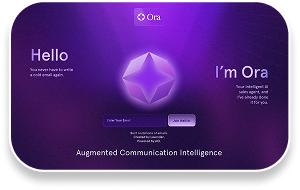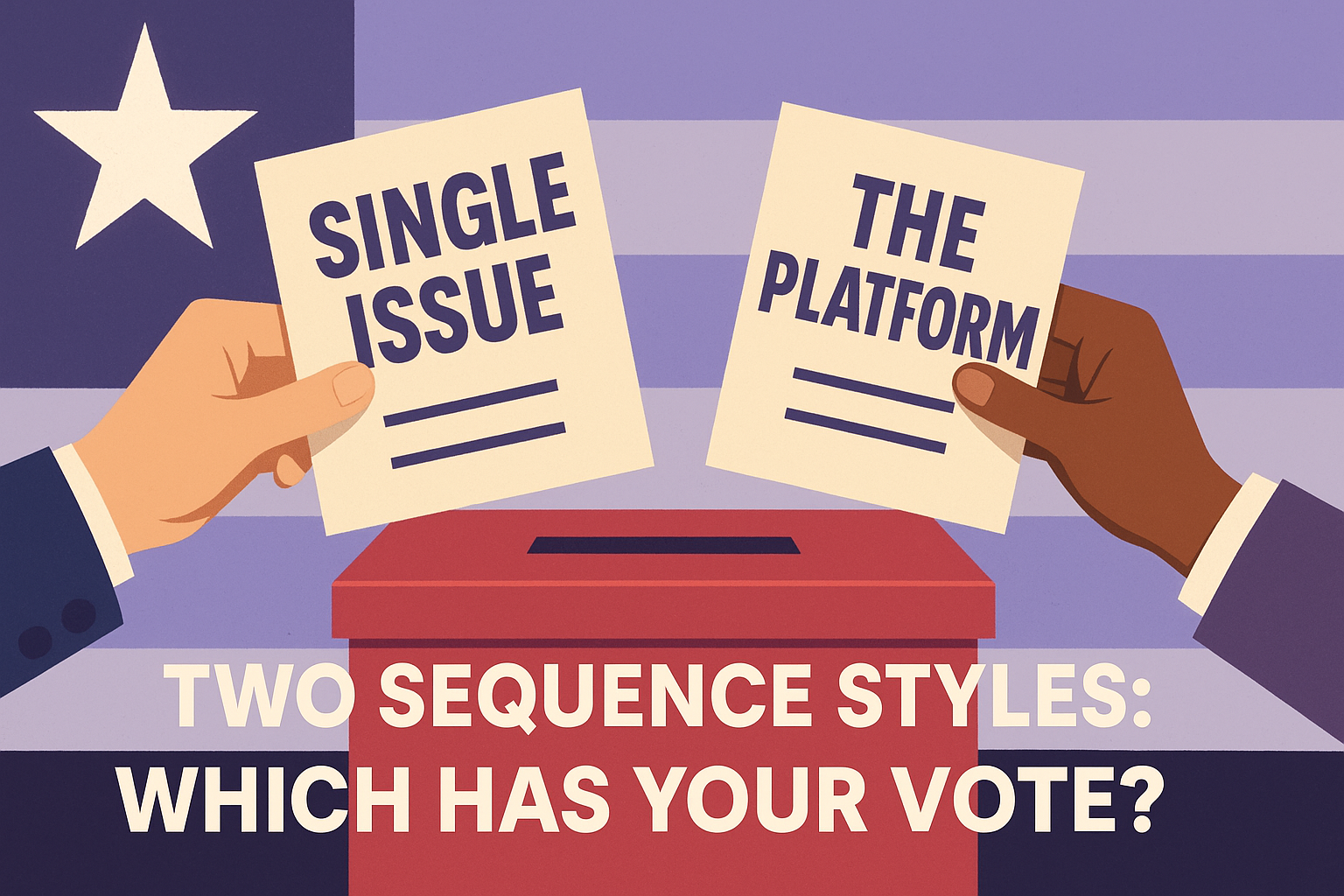Using AI to Build Prospecting Lists
Let's dig into some of the best ways to use AI for sharper list building and more nuanced personalization.

“How in the world did sales spend over $20k on OpenAI credits this month?”
If you're in sales and you're exploring AI solutions (ex. Clay) for helping your team build prospecting lists, don't be surprised when the finance team raises some eyebrows.
"How is this different from the tens of thousands we're already spending per year on our data provider?"
These are fair questions, and you need to be prepared to back up the logic behind these investments.
Plus, if you're not careful, it can be a bit like going to the casino. You spend a lot of money, and you're not sure what you got in return.
The spend can get out of control because it's variable. The category feels unfamiliar. And when the spend spikes, it starts to sound like someone in sales is training their personal robot army.
That $20K bill might actually be a great sign.
Especially if you are using AI to get much sharper about who you prospect to.
This can unearth new leads, lead to tighter segmentation, provide higher quality leads, and it can give your team shaper reasoning for reaching out by taking custom research tasks off your sellers plates.
Let's start by talking about why traditional data vendors aren't cutting it in comparison.
Traditional Data Vendors: "Ready to Wear" vs. Tailored Clothing
Ready to Wear is the clothing term for clothes you'd buy off the rack at a typical retailer. The designer creates the fit. They establish the sizes. They might fit you well. But, you might also find it's not always perfect.
Traditional Data Vendors operate with a "ready to wear" model. They invest heavily in sourcing and procuring the best contact data. But, they're trying to appeal to the masses. They can't afford to spend time building super custom data fields that would only be relevant to a niche like SOC2 security companies.
You need a list of Sales Reps at companies in Software? They'll pull it.
The only problem? You might miss loads of software companies because the company categorizes itself as an "internet" company or a "life sciences" group despite sharing common characteristics with other software companies that would be relevant based on what you sell.
You might also find that traditional data vendors can't pull the same scope of companies in your space that you care about. A good example would be small local retail stores. A traditional data vendor might not have the same depth of research available compared to what you might find if you searched a Google Maps generated directory.
This is where AI is making it possible for every company to have a "tailor".
AI isn't the data vendor. It's replacing work the reps are already doing.
AI shouldn't be viewed as a data vendor.
AI does not just “enrich” data.
AI gives you the ability to build your own understanding of a company.
You can tell an AI agent:
- Go to this site.
- Figure out if they sell B2B.
- Confirm that they're SaaS.
- Look at their customer logos. Tell me if they serve multiple industries / enterprise logos.
- Check for SOC2.
- Look at pricing. Do they offer it? Do they offer freemium?
- Look at job openings.
- Tell me how they actually go to market.
This used to take a human several minutes per account.
Now it takes a few seconds.
And it can be done across thousands of companies at once.
Or for our local retail example, you can have AI crawl google maps to create a richer list of companies.
This combination is the real unlock:
AI lets you expand the TAM and sharpen it at the same time.
That simply has not been possible before.
The Highest Value Uses of AI for List Building
A lot of teams think AI is for “writing emails.” (we're pretty good at it 😏)But, we are constantly advising teams to also look at other AI powered tools to help them feed their Ora agents tighter, clearer lists.
Here are the places AI moves the needle the most.
1. Validating the simple fit rules that reps check every day
Every company has a few binary filters that determine whether a lead is even worth looking at. Using tools like Clay, you can run AI agents against websites to validate certain characteristics about a company.
Here's an example: for Ora, we run agents on accounts to verify if they:
- Sell B2B or only B2C: We can't support a B2C usecase. So we shouldn't waste outbound on companies that are exclusively B2C.
- Are a SaaS company: this one requires some nuanced prompting to see if they likely sell with a subscription based model.
These are some basic examples. But, they are both things that used to require a rep manually checking accounts. But with AI we can quickly tag and sort these companies.
Massive time savings.
2. Pulling specific details that enable great personalization via segmentation
These can be the start to great personalized prospecting "plays". By using AI agents, you can pull hyper specific details from their website, social posts, product reviews, etc.
You can use AI to scrape negative reviews, testimonials on websites, social posts about certain topics, specific terms in their privacy policy etc.
These can be used to run more segmented outbound campaigns that either pull in these attributes as segmentations (ex. reaching out to teams with bad reviews) or as specific elements in your messaging (ex. citing the specific bad review).
Sellers could go get these things account by account. They could run other plays when this research isn't available. Or you can take this context switching away from the seller and give them much more targeted campaigns to operate within.
Some more examples we've used internally and seen others use:
- if their product has a self serve option
- if their case studies indicate enterprise or SMB focus
- if their terms of service reference something important
- if their site uses a particular CTA
A traditional data vendors will never label these things. But, AI can supplement these vendors to help you pull nuanced data reliably and repeatedly.
3. Tiering accounts based on how your best customers behave
Sellers typically are asked to "tier" or prioritize their territory. They look at basic attributes like size, revenue, and industry and combine their bias to create completely non-standardized tiers of their accounts.
Using a "formula" you can have AI apply better rules to tier your accounts. Your best fit customers likely have a shared set of attributes, nuanced and standard. You can combine standard fields with the attributes from sections 1 and 2 above. Your best fit customers likely have a shared set of attributes, nuanced and standard. Use them to help shape this formula. Instead of a generic “Tier 1, 2, 3,” you end up with a tiering model that reflects reality.
This is exactly what we had to do when we launched Ora.
Ora’s best fit customers look nothing like the best fit customers for Lavender’s Email Coach. Different personas. Different team structures. Different urgency. Different deal sizes. And very different patterns in sales calls and expansion opportunities.
There was no vendor that could reflect that shift.
AI could. And it did. Very quickly.
That is where the “surprising” OpenAI bill came from that inspired the blog. Not from experimentation. From clarity.
4. Expand your TAM
Data vendors might fail to have a full view of your market. A great example is if you sell to mom 'n pop retailers. Using a scrape of Google Map search results. AI can help you get a more comprehensive view of accounts that you can target.
The same can be true even if you target an industry like "SaaS" companies. They may not be covered by "SaaS" and using some of the tricks in section 1 can unlock new accounts to prospect.
The Bottom Line
Finance might gasp because $20K AI bill feels unexpected. The old way spreads that same spend across long term contracts and inefficient manual work. You're still paying for it. You just did not see it in one place.
AI gives sales teams the ability to build a dynamic, accurate view of their market.
The result is:
- better lists
- better targeting
- better conversations
- better customers
- better pipeline
You are not spending more.
You are spending smarter.







